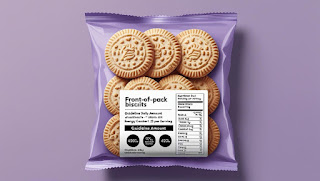What do consumers see first when they pick up a pack of chips or biscuits from the shelf? Apart from the price or expiration date, there’s also information that is on the front of the pack about the nutritional content of the product. To help make this information more meaningful and impactful, Mondelēz International brought together leaders from government, health, retail, and design agencies in a think tank focused on front-of-pack labeling (FOPL).
Mondelēz International and leaders from various sectors tackled one critical goal: How to help Filipinos make more informed food choices by using simple, science-backed front-of-pack labels that promote overall nutrition literacy rather than fear or confusion.
Understanding the Different Types of Front-of-Pack Labels
Panelists and experts explored several FOPL systems being used or considered globally and locally:
Guideline Daily Amounts (GDA): This numeric system displays how much a serving of the product contributes to a person’s recommended daily intake of either calories, sugar, fat, saturated fat, and sodium – or in other countries all of them. It helps consumers understand how the food fits into their day without assigning a “good” or “bad” label.
Nutri-Grade / Nutri-Score/ Traffic Light: These interpretive labels use color coding and letter grades (A to D or green to red) to give a quick visual cue about the overall nutritional profile of a product. They balance both positive (fiber, protein) and negative (sugar, salt, saturated fat) components to provide a broader view of healthfulness. The colors used are like a traffic light: Red, yellow, and green leveraging on universally understood symbols to make the information understandable to most consumers.
Warning Labels: Often shown as black “stop” symbols, the purpose of this system is to help consumers identify products which contain determined excessive amounts of critical nutrients such as sugars, total fats, saturated fats, trans fats, and sodium.
In Southeast Asia, Singapore has already implemented the Nutri-Grade system, which assigns a grade from A to D based on the sugar and saturated fat content of beverages. The aim is to help consumers quickly assess healthier options. As more countries in Southeast Asia explore front-of-pack labeling, there is growing consensus that harmonizing FOPL systems across the region could support both consumer clarity and trade facilitation, ensuring that products move more smoothly across markets while upholding shared public health goals.
In a group discussion, attendees agreed that front-of-pack labels should be clear, simple, and easy for the average consumer to understand—regardless of age, education level, or health literacy. They emphasized that labels must be grounded in science, free of judgment, and designed to support informed decision-making, not fear. Also as important is a comprehensive communication and education plan to help consumers understand and benefit from these labels. The goal is to create a system that empowers consumers to interpret nutrition at a glance and apply it to their daily diet choices.
For a deeper dive into the discussion, you may visit this link:
🔗 https://www.adobomagazine.com/adobo-exclusive/what-makes-good-nutrition-labels-a-recap-of-the-think-tank-for-effective-front-of-pack-labels-with-mondelez-international/






No comments:
Post a Comment